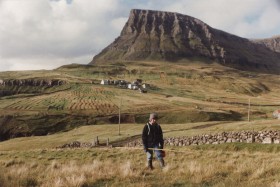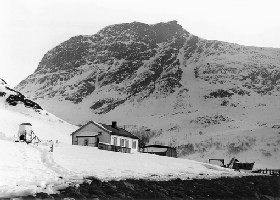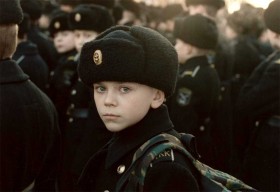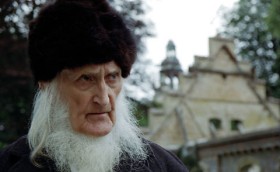


Nordisk Panorama 25!
Nordisk Panorama 25! – a documentary tour down memory lane. Yes, the first one was in Grimstad, this idyllic and romantic spot on the South coast of Norway. I was there and so was she, with whom I have shared my life since then. Grimstad 1990, unforgettable, a place in my heart… I was there on behalf of Statens Filmcentral (National Film Board of Denmark) and as part of the group that was to set up Filmkontakt Nord the year after. Therefore, a thank you for asking me to write about what has happened to Nordic documentaries in the quarter of a century that has passed. I have chosen to primarily go back to focus on directors and films, which I remember and which have made an impact on the Nordic and/or the international scene. You will probably miss some, especially ”newer” ones, I can’t cover it all. You will agree that nothing is so boring as extensive name- and title-dropping. I will try to control myself. And of course it is a personal choice that I have made.
SOCIAL AND OBSERVATIONAL
There was a pretty strong line-up of documentaries in 1990. When I look at the list of films and directors in competition (there were no films from Iceland and only one from Finland!), in my view, three stand out and have indeed put their mark on Nordic documentaries.
Sigve Endresen was there with ”For your Life” (”For harde livet”), 98 minutes of strong social documentary on drug addicts, a film that reached a huge audience in the cinemas of Norway and opened the door for the director to make another critical statement on how the society treats its outsiders – ”Big Boys Don’t Cry” (”Store gutter gråter ikke”) on young prisoners taking part in a rehabilitation project. It was at Nordisk Panorama (NP) 1995, followed by ”Living Among Lions”(”Leve blandt løver”) at NP 1998, on three young people who suffer from cancer. In 2002 he took part in NP with the portrait of singerKari Iveland, named ”Weightless” (”Vektløs”). The style of his films is direct, mostly with no sentimentality.
I remember that we Danes were jealous on the Norwegians, who could get documentary films reach the cinema. And also have them used in educational contexts – here we touch upon a typical Nordic issue that I have always highlighted at workshops abroad: the non-theatrical use of films for public education and debate.
As Jørgen Roos (also in my school time) took me to Greenland with his many films, giving me an insight to their culture and people, Ulla Boje Rasmussen is the documentarian, who has taken me and audiences around the world to her beloved Faroe Islands (Færøerne). ”1700 Metres from the Future” (”1700 meter fra fremtiden”) includes gorgeous nature sequences and fine portraits of the 16 (!) inhabitants, who get a tunnel connecting them to the rest of the world. The film is a classic in Danish documentary history with superb cinematography by Andreas Fischer-Hansen, also the producer. The two stood behind Nordfilm (right name!) that also made the follow-up ”The Light on Mykines Island” (”Tre blink mod vest”) (NP 1992), equally from the islands towards the North… I will send you to another island, said a filmconsultant years later, he happened to be me, to the director, let’s find an island in the South for a new film. Ulla chose Sardinia and out came ”Coro di Bosa” (NP 1998), which as the Faroe films had a fine international career. Boje Rasmussen has later on returned to the North making films in Greenland and Iceland, and one about the independence movement in Faroe Islands. The latter was at NP 2003, entitled ”Rugged Road to Independence” (”Færøerne.dk”).

1700 Metres from the Future
FILM AND VIDEO
Most of the films from 1990 were shot on 16 or 35mm film. One can reflect a lot on what has happened with the documentary going from film to video. Quality in cinematography has gone radically down, many say. There is a lack of focus, many think they will ”just” organize it all in the editing room and as most of the films end up on a tv screen anyway, why care so much about the image quality, others say. This discussion is of course aimless today, in 2014, where all is shot with cameras that can produce images with sense of Cinema, in times wheremore and more documentary films end up on the big screens throughfestivals like NP and/or state supported distribution initiatives.
Why are documentaries today more popular than ever? Is it (also) because they are able to get very close to theme and characters? Where before the presence of a whole film crew would create a distance? Look at all the family-films that come forward shot and recorded by one person. In the doc history every new technical development has created a new aesthetic = a new documentary style. As now the hybrid of 2014. What the documentary has lost in aesthetics and image quality, it has gained in closeness to theme and characters. Camera comme stylo.
A CHAMPION
Back to 1990 and to one of the most aesthetically dedicated documentarians of the Nordic countries, Swedish Jan Röed, who I have met so many times at the NP festivals. ”Tong Tana” 1 (NP 1990) & 2 (2001) , ”Betrayal” (NP 1994), ”The Atlantic” (”Atlanten”) (NP 1995), ”Bongo Beat” (NP 1997), ”The Lighthouse” (”Fyren”) (NP 1999), ”Tokyo Noise” (2002), ”The Planet” (2006) … Jan Röed has an amazing filmography as director of several of the films as well as producer through the company Charon. The films from the company has often had a team spirit character with Röed, Björn Cederholm, Fredrik von Krustenstjerna, Kristian Petri and Johan Söderberg in close creative collaboration. I asked editor Niels Pagh, who has worked with Röed on several films to give me some characterising words: ”Janne is the champion of the mastershot. I’ve never worked with a photographer, who as him can capture the grandeur, beauty and horror of nature. Nature images have a tendency to be romantizising and sentimental, postcards for the urban human’s desires. Janne has a strict composition and he waits patiently for the right light for his totals of nature”.
THE SHORT FILMS
Very much significant already in 1991 is the tradition for short films in the Nordic countries. It was a sensation back then, nothing less, to watch ”A Year along the Abandoned Road” (”Året gjennom Børfjord”), ”one year in 12 minutes and 70mm”! Morten Skallerud, the director, has written a great text (http://www.cameramagica.no/About_Year.htm) from where here is a quote:
”Making this film had been a dream for many years, ever since January 1980 when I first came to this deserted, isolated, weather-beaten small village in Finnmark, located in northernmost Norway. Then the dream slowly turned into reality after we found a reliable method of doing extended tracking shots over rugged terrain, frame by frame. Thestory of the making of “A Year along the Abandoned Road” contains a lot of technical innovation. It also contains a different film language, and five Norwegians who fought sub-Arctic nature in order to turn a “crazy” idea into a 12-minute, 70mm film…”

A Year along the Abandoned Road
The same year a fascinating Finnish short documentary was presented, 4 minutes, 35mm, ”Darkness” (”Pimeys”) by Marja Pensala – blind female masseuse with black client – sounds banal but has so many layers in all its shortness. One of those films that you remember clearly, when you go online to watch a still. More than 20 years later.
PIRJO
Let’s stay in Finland. On the list from 1992 is ”Mysterion” by Pirjo Honkasalo, a world class documentarian, director and camerawoman and aunique inspirator for young filmmakers. A master of the personal, authored film. In 1993 she made ”Tanjuska and the seven Devils” and in 1997 ”Atman”, the three of them forming a trilogy called “The Trilogy of the Sacred and the Satanic”. Her true international breakthrough,however, came with ”The 3 Rooms of Melancholia” (”Melancholian 3 huonetta”) (NP 2004) that is praised wherever I go. Was the absence of ”Tanjuska…” and ”Atman” at NP because idfa (the International Documentary Film Festival in Amsterdam) requires world premieres? I have never understood this stupid thought of exclusivity. Anyway, ”Atman” won the Joris Ivens Award at idfa.
A small Nordic anecdote about Pirjo Honkasalo, who is absolutely against pitching, which she finds barbaric (my word). However,producer Kristina Pervilä and some of us fans of the director convinced her to pitch at a Nordisk Forum in Aarhus. She did so showing still photos of her characters for the ”Melancholia” film, talking passionately about them and the theme of the film. In the middle of her pitch the light went out in the room and Honkasalo said ”there you see, it does not work with me and pitching”! The light came back, she continued and the producer left Aarhus with around 1.5 mio. DKK!

3 Rooms of Melancholia
FAMILIES
A decade later, in 2002, I experienced a year of significance in terms of storytelling and themes. The selection had three strong films, all with focus on the family. Swedish Erik Bäfving’s ”Boogie Woogie Daddy” (”Boogie Woogie Pappa”) is built on photos taken by the father of the director. It is very seldom you meet such an emotionally balanced poetic short documentary that appeals to all of us, who have lived with alcoholic fathers.

Boogie Woogie Daddy
Norwegian Even Bennestad presented ”All About My Father” (”Alt om min far”), an equally painful but also warm interpretation by the director. What does it mean to have a father, who is a man but sees himself as a woman. The third to mention is the Danish ”Family” by Sami Saif and Phie Ambo, a milestone for a new Danish generation of documentarians, followed five years later by another masterpiece, ”The Monastery” by Pernille Rose Grønkjær (NP 2007).

The Monastery
EARLY HYBRID DOCUMENTARY
As a football freak I enjoyed ”Africa United” at NP 2005 and the year after I admired the energy and playfulness of the Icelandic director Olafur Johanneson (later on Olaf de Fleur) with his ”Act Normal”, about the Buddhist monk and his dramatic life. Quite an achievement, shot over many years, quick, fresh editing that was also demonstrated in those years by Erik Gandini and his ”Videocracy” (NP 2009) starring Silvio Berlusconi, and Anders Østergaard with ”Burma vj” (NP 2009) that went the whole way to an Oscar nomination. Yes, we have something special in the Nordic countries… a
DOCUMENTARY CULTURE
which is quite exceptional in terms of structure and has been able to initiate and nurture a tradition that includes strong film schools, film festivals, rich national film institutions, financing collaboration through Nordisk Film/TV Fond, national distribution systems with theatrical and non-theatrical schemes. A system like that has been bringing forward auteurs like Norwegian Margreth Olin and Erlend E. Mo, Swedish Stefan Jarl, Mia Engberg, Fredrik and Magnus Gertten and PeÅ Holmquist, Danish Jon Bang Carlsen, Jørgen Leth and Anne Wivel and Finnish John Webster and Jukka Kärkkäinen. Who, as the ones I gave space in the article, have been given space to develop their own style and cinematic approach to subjects from all over the world.
There is a long way from Ulla Boje Rasmussen and her true Nordic voice to Mia Engberg and her wonderful ”selfie-documentary” ”Belleville Baby”. What a richness in expression and artistic quality that lies in those 25 years. Did I forget anyone… Absolutely!